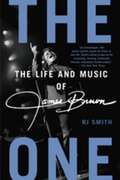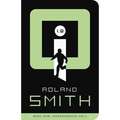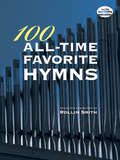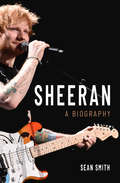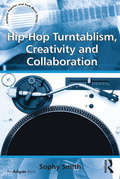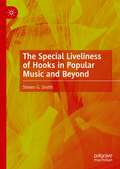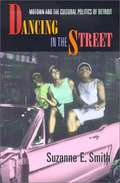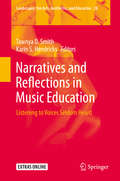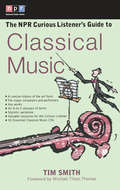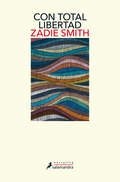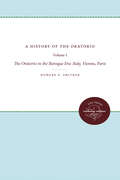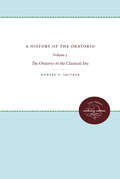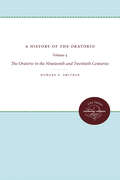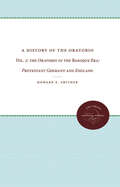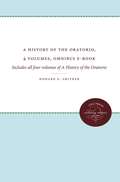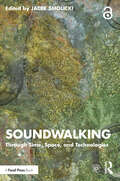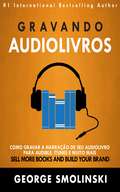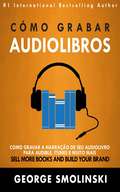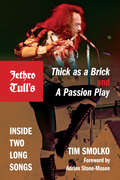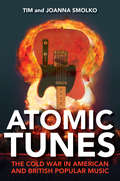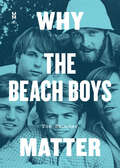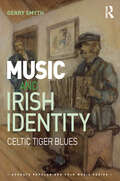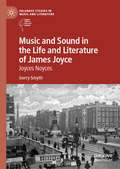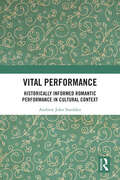- Table View
- List View
The One
by Rj SmithThe definitive biography of James Brown, the Godfather of Soul, with fascinating findings on his life as a Civil Rights activist, an entrepreneur, and the most innovative musician of our time Playing 350 shows a year at his peak, with more than forty Billboard hits, James Brown was a dazzling showman who transformed American music. His life offstage was just as vibrant, and until now no biographer has delivered a complete profile. The One draws on interviews with more than 100 people who knew Brown personally or played with him professionally. Using these sources, award-winning writer RJ Smith draws a portrait of a man whose twisted and amazing life helps us to understand the music he made. The One delves deeply into the story of a man who was raised in abject-almost medieval-poverty in the segregated South but grew up to earn (and lose) several fortunes. Covering everything from Brown's unconventional childhood (his aunt ran a bordello), to his role in the Black Power movement, which used "Say It Loud (I'm Black and Proud)" as its anthem, to his high-profile friendships, to his complicated family life, Smith's meticulous research and sparkling prose blend biography with a cultural history of a pivotal era. At the heart of The One is Brown's musical genius. He had crucial influence as an artist during at least three decades; he inspires pity, awe, and revulsion. As Smith traces the legend's reinvention of funk, soul, R&B, and pop, he gives this history a melody all its own.
Independence Hall (I.Q. #1)
by Roland SmithTeenagers Q (Quest) and Angela are accompanying rockers Blaze and Roger on their U.S. tour. In Philadelphia, Angela realizes she's being followed, and Q soon learns the secret about Angela's real mother--a former Secret Service agent.
100 All-Time Favorite Hymns (Dover Music for Organ)
by Rollin SmithSpecially arranged for organ but playable on any keyboard instrument, this collection features such beloved hymns as A Mighty Fortress Is Our God, Amazing Grace, and Onward, Christian Soldiers. Compiled by a specialist in the organ repertoire, this modestly priced volume features a lay-flat sewn binding, Introduction, and Indexes.
Sheeran: A Biography
by Sean SmithThe first comprehensive adult biography of the beloved, redheaded “Shape of You” songster, complete with exclusive interviews and all-new research! Grammy-award winner Ed Sheeran strikes chords in millions of listeners worldwide—a feat all the more staggering given that he couldn’t even carry a tune until the age of fifteen. At thirteen, then just a guitarist in a school rock band, today’s most successful solo star decided he would fly far higher than hometown fame. Within a year, he had recorded an album in his bedroom. Bestselling biographer Sean Smith traces the astonishing journey of the shy little English boy with a stammer who, avoiding flashy showmanship, grew up to become a global phenomenon. With compelling new research and interviews, Smith delivers the story of Sheeran’s remarkable parents, who supported their son’s dream long before it seemed achievable; the friends and mentors who encouraged his raw talent; and the lovers who inspired his most famous songs. Smith describes the setbacks Sheeran faced before his fortunes were transformed by Elton John’s management company, a record deal, and a song that changed everything…with some help from Taylor Swift. Now Sheeran has sold 150 million records worldwide, earned $432 million touring in 2018 alone, and broke records with his 2018 UK tour—but still made time to play for just 400 people at a charity night to raise money for the homeless last year. As this captivating book reveals, there’s no one quite like Ed.
Hip-Hop Turntablism, Creativity and Collaboration (Ashgate Popular and Folk Music Series)
by Sophy SmithArmed only with turntables, a mixer and a pile of records, hip-hop DJs and turntable musicians have changed the face of music. However, whilst hip-hop has long been recognised as an influential popular culture both culturally and sociologically, hip-hop music is rarely taken seriously as an artistic genre. Hip-Hop Turntablism, Creativity and Collaboration values hip-hop music as worthy of musicological attention and offers a new approach to its study, focusing on the music itself and providing a new framework to examine not only the musical product, but also the creative process through which it was created. Based on ten years of research among turntablist communities, this is the first book to explore the creative and collaborative processes of groups of DJs working together as hip-hop turntable teams. Focusing on a variety of subjects - from the history of turntable experimentation and the development of innovative sound manipulation techniques, to turntable team formation, collective creation and an analysis of team routines - Sophy Smith examines how turntable teams have developed new ways of composing music, and defines characteristics of team routines in both the process and the final artistic product. Relevant to anyone interested in turntable music or innovative music generally, this book also includes a new turntable notation system and methodology for the analysis of turntable compositions, covering aspects such as material, manipulation techniques and structure as well as the roles of individual musicians.
The Special Liveliness of Hooks in Popular Music and Beyond
by Steven G. SmithThis book illuminates the aesthetically underrated meaningfulness of particular elements in works of art and aesthetic experiences generally. Beginning from the idea of "hooks" in popular song, the book identifies experiences of special liveliness that are of enduring interest, supporting contemplation and probing discussion. When hooks are placed in the foreground of aesthetic experience, so is an enthusiastic “grabbing back” by the experiencer who forms a quasi-personal bond with the beloved singular moment and is probably inclined to share this still-evolving realization of value with others. This book presents numerous models of enthusiastic “grabbing back” that are art-critically motivated to explain how hooks achieve their effects and philosophically motivated to discover how hooks and hook appreciation contribute to a more ideally desirable life. Framing hook appreciation with a defensible general model of aesthetic experience, this book gives an unprecedented demonstration of the substantial aesthetic and philosophical interest of hook-centered inquiry.
Dancing in the Street: Motown and the Cultural Politics of Detroit
by Suzanne E. SmithDetroit in the 1960s was a city with a pulse: people were marching in step with Martin Luther King, Jr., dancing in the street with Martha and the Vandellas, and facing off with city police. Through it all, Motown provided the beat. This book tells the story of Motown--as both musical style and entrepreneurial phenomenon--and of its intrinsic relationship to the politics and culture of Motor Town, USA. <p><p>As Suzanne Smith traces the evolution of Motown from a small record company firmly rooted in Detroit's black community to an international music industry giant, she gives us a clear look at cultural politics at the grassroots level. Here we see Motown's music not as the mere soundtrack for its historical moment but as an active agent in the politics of the time. In this story, Motown Records had a distinct role to play in the city's black community as that community articulated and promoted its own social, cultural, and political agendas. Smith shows how these local agendas, which reflected the unique concerns of African Americans living in the urban North, both responded to and reconfigured the national civil rights campaign. <p><p>Against a background of events on the national scene--featuring Martin Luther King, Jr., Langston Hughes, Nat King Cole, and Malcolm X--Dancing in the Street presents a vivid picture of the civil rights movement in Detroit, with Motown at its heart. This is a lively and vital history. It's peopled with a host of major and minor figures in black politics, culture, and the arts, and full of the passions of a momentous era. It offers a critical new perspective on the role of popular culture in the process of political change.
Narratives and Reflections in Music Education: Listening to Voices Seldom Heard (Landscapes: the Arts, Aesthetics, and Education #28)
by Tawnya D. Smith Karin S. HendricksThis volume offers chapters written by some of the most respected narrative and qualitative inquiry writers in the field of music education. The authorship and scope are international, and the chapters advance the philosophical, theoretical, and methodological bases of narrative inquiry in music education and the arts. The book contains two sections, each with a specific aim. The first is to continue and expand upon dialogue regarding narrative inquiry in music education, emphasizing how narrative involves the art of listening to and hearing others whose voices are often unheard. The chapters invite music teachers and scholars to experience and confront music education stories from multiple perspectives and worldviews, inviting an international readership to engage in critical dialogue with and about marginalized voices in music. The second section focuses on ways in which narrative might be represented beyond the printed page, such as with music, film, photography, and performative pieces. This section includes philosophical discussions about arts-based and aesthetic inquiry, as well as examples of such work.
The NPR Curious Listener's Guide to Classical Music
by Tim Smith Michael Tilson ThomasFor the beginner or the devotee--it's everything the classical music buff needs to know. The major composers from Bach and Bartok to Rachmaninoff and Tchaikovsky Significant performers from Maurice Andre and Leornard Bernstein to Georg Solti and Yo Yo Ma The landmark works from Appalachian Spring to Don Juan A concise history of classical music A deconstruction of the art form The language of classical music Valuable resources for the Curious Listener
Con total libertad
by Zadie SmithUn libro cargado de agudeza, frescura y empatía que nos ilumina en un mundo cada vez más cambiante y contradictorio. Zadie Smith ha demostrado ser una ensayista brillante y singular, haciendo que cada texto suyo sea un acontecimiento literario por derecho propio. Con total libertad, que recopila algunos de los más celebrados, abarca el amplísimo rango de intereses de Smith: desde todas las facetas de la cultura y la libertad artística hasta los temas más acuciantes de la política y la actualidad, siempre desde una perspectiva original y radicalmente personal. Gracias a su fina agudeza, una frescura contagiosa y una empatía extraordinaria, este libro es una guía imprescindible para entender un mundo, el nuestro, cada vez más complejo y contradictorio. La crítica ha dicho:«Ecléctica en sus gustos y centrífuga en su estilo, Zadie Smith disfruta, como articulista, de ampliar los límites de su pensamiento [...] En la línea de Hazlitt y Orwell, Woolf y Angela Carter.»The Financial Times «Interesante, sagaz [...]¿Se debe leer este libro brillante? ¡Por supuesto que sí!»The Independent «Un libro inteligente, ingenioso y a menudo hilarante que demuestra que (Zadie Smith) es una de las mentes más brillantes de la literatura británica de hoy en día.»NPR «Es un placer exquisito observar a Zadie Smith pensar a lo largo de estas páginas.»The New York Times Book Review «Smith lleva a la escritura de artículos sus dotes como novelista: buen ojo para el detalle, sutiles giros en las frases.»The Boston Globe «Estos ensayos en su conjunto reflejan una mente abierta, vivaz, natural, rigurosa, erudita y seria, ocupada en perfeccionar su manera de ver la vida, la literatura y la relación entre ambas. Smith demuestra que es mucho más que una cabeza adulta y comprensiva sobre unos hombros muy jóvenes. Y lo demuestra con su apasionada, compulsivamente dialéctica y atractiva indagación de la literatura».Los Angeles Times «No importa sobre lo que escriba -su padre, Kafka, Liberia, George Clooney-: colocar cualquier tema dentro del campo magnético de su cerebro incansable basta para volverlo fascinante. Smith [...] tiene el don de mostrarnos cómo lee y piensa; al ver cómo lo hace, uno se siente a su vez más inteligente y observador por ósmosis.»Time
A History of the Oratorio: Vol. 1: The Oratorio in the Baroque Era: Italy, Vienna, Paris
by Howard E. SmitherHoward Smither has written the first definitive work on the history of the oratorio since Arnold Schering published his Geschichte des Oratoriums in 1911. This volume is the first of a four-volume comprehensive study that offers a new synthesis of what is known to date about the oratorio.Volume 1, divided into three parts, opens with the examination of the medieval, Renaissance, and early Baroque antecedents and origins of the oratorio, with emphasis on Rome and Philip Neri's Congregation of the Oratory and with special attention to the earliest works for which the term oratorio seems appropriate. The second part recounts the development of the oratorio in Italy, circa 1640-1720. It reviews the social contexts, patrons, composers, poets, librettos, and music of the oratorio in Italy, especially in Vienna and Paris. The procedure adapted throughout the work is to treat first the social context, particularly the circumstances of performance of the oratorio in a given area and period, then to treat the libretto, and finally the music. For each geographic area and period, the author has selected for special attention a few oratorios that appear to be particularly important or representative. He has verified the information offered in the specialized literature whenever possible by reference to the music or documents. In a number of areas, particular seventeenth-century Italy, in which relatively few previous studies have been undertaken or secondary sources have proven to be inadequate, the author has examined the primary sources in manuscript and printed form -- music, librettos, and documents of early oratorio history. Impressive research and intelligent integration of disparate elements make this complicated, diffuse subject both readable and accessible to the student of music.Volume 2, The Oratorio in the Baroque Era: Protestant Germany and England, and Volume 3, The Oratorio in the Classical Era, continue and expand the study of oratorio history. Although this series was originally announced as a three-volume study, Smither will conclude with a fourth volume.This new work--the first English-language study of the history of the oratorio will become the standard work on its subject and an enduring contribution to music and scholarship.Originally published in 1977.A UNC Press Enduring Edition -- UNC Press Enduring Editions use the latest in digital technology to make available again books from our distinguished backlist that were previously out of print. These editions are published unaltered from the original, and are presented in affordable paperback formats, bringing readers both historical and cultural value.
A History of the Oratorio: Vol. 3: the Oratorio in the Classical Era
by Howard E. SmitherThe Oratorio in the classical Era is the third volume of Howard Smither's monumental History of the Oratorio, continuing his synthesis and critical appraisal of the oratorio. His comprehensive study surpasses in scope and treatment all previous works on the subject. A fourth and final volume, on the oratorio in the nineteenth and twentieth centuries, is forthcoming.In this volume Smither discusses the Italian oratorio from the 1720s to the early nineteenth century and oratorios from other parts of Europe from the 1750s to the nineteenth century. Drawing on works that represent various types, languages, and geographical areas, Smither treats the general characteristics of oratorio libretto and music and analyzes twenty-two oratorios from Italy, England, Germany, France, and Russia. He synthesizes the results of specialized studies and contributes new material based on firsthand study of eighteenth-century music manuscripts and printed librettos. Emphasizing the large number of social contexts within which oratorios were heard, Smither discussed examples in Italy such as the Congregation of the Oratory, lay contrafraternities, and educational institutions. He examines oratorio performances in German courts, London theaters and English provincial festivals, and the Parisian Concert spirituel. Though the volume concentrates primarily on eighteenth-century oratorio from the early to the late Classical styles, Smither includes such transitional works as the oratorios of Jean-Francios le Seur in Paris and Stepan Anikievich Degtiarev in Moscow.A History of the Oratorio is the first full-length history of the genre since Arnold Schering's 1911 study. In addition to synthesizing current thought about the oratorio, this volume contributes new information on relationships between oratorio librettos and contemporary literary and religious thought, and on the musical differences among oratorios from different geographical-cultural regions.Originally published in 1987.A UNC Press Enduring Edition -- UNC Press Enduring Editions use the latest in digital technology to make available again books from our distinguished backlist that were previously out of print. These editions are published unaltered from the original, and are presented in affordable paperback formats, bringing readers both historical and cultural value.
A History of the Oratorio: Vol. 4: The Oratorio in the Nineteenth and Twentieth Centuries
by Howard E. SmitherWith this volume, Howard Smither completes his monumental History of the Oratorio. Volumes 1 and 2, published by the University of North Carolina Press in 1977, treated the oratorio in the Baroque era, while Volume 3, published in 1987, explored the genre in the Classical era. Here, Smither surveys the history of nineteenth- and twentieth-century oratorio, stressing the main geographic areas of oratorio composition and performance: Germany, Britain, America, and France.Continuing the approach of the previous volumes, Smither treats the oratorio in each language and geographical area by first exploring the cultural and social contexts of oratorio. He then addresses aesthetic theory and criticism, treats libretto and music in general, and offers detailed analyses of the librettos and music of specific oratorios (thirty-one in all) that are of special importance to the history of the genre.As a synthesis of specialized literature as well as an investigation of primary sources, this work will serve as both a springboard for further research and an essential reference for choral conductors, soloists, choral singers, and others interested in the history of the oratorio.Originally published 2000.A UNC Press Enduring Edition -- UNC Press Enduring Editions use the latest in digital technology to make available again books from our distinguished backlist that were previously out of print. These editions are published unaltered from the original, and are presented in affordable paperback formats, bringing readers both historical and cultural value.
A History of the Oratorio: Vol. 2: the Oratorio in the Baroque Era: Protestant Germany and England
by Howard E. SmitherWritten by an eminent scholar in a style that represents American musicological writing at its communicative best, A History of the Oratorio offers a synthesis and critical appraisal so exhaustive and reliable that the serious student of the oratorio will be compelled to look to these volumes as an indispensable source. No work on the history of the oratorio has yet appeared in the English language that is comparable in scope and treatment with Howard Smither's comprehensive four-volume work.The first part of volume 2 examines in depth the antecedents and origins of the oratorio in Protestant Germany in the seventeenth century. It includes discussions of the Lutheran Historia, sacred dramatic dialogues, and the Lubeck Abendmusiken of Buxtehude. The second part treats the oratorio in Protestant Germany in the early eighteenth century and examines Handel, Reinhard Keiser, and J.S. Bach. The third part considers primarily the English oratorios of Handel. In most sections of A History of the Oratorio, the author has selected for special attention a few oratorios that are representative of each geographical area and period. An exception to this procedure is in the section on Handel in this volume, where all of the composer's English oratorios are treated fully with particular reference to recent specialized Handel studies.Volume 1, The Oratorio in the Baroque Era: Italy, Vienna, Paris, and Volume 3, The Oratorio in the classical Era, expand and continue the study of oratorio history. Although this series was originally announced as a three-volume study, Smither will conclude with a fourth volume.Originally published in 1977. A UNC Press Enduring Edition -- UNC Press Enduring Editions use the latest in digital technology to make available again books from our distinguished backlist that were previously out of print. These editions are published unaltered from the original, and are presented in affordable paperback formats, bringing readers both historical and cultural value.
A History of the Oratorio, 4 volumes, Omnibus E-book
by Howard E. SmitherThe University of North Carolina Press is proud to announce Howard Smither's ground-breaking four-volume A History of the Oratorio, are now available in one convenient Omnibus E-Book edition. Published as UNC Press Enduring Editions, these volumes bring Smither's landmark scholarship to a new generation of readers and scholars.Written by an eminent scholar in a style that represents American musicological writing at its communicative best, A History of the Oratorio offers a synthesis and critical appraisal so exhaustive and reliable that the serious student of the oratorio will be compelled to look to these volumes as an indispensable source. No work on the history of the oratorio has yet appeared in the English language that is comparable in scope and treatment with Smither's comprehensive four-volume work.Volumes 1 and 2, published by the University of North Carolina Press in 1977, treated the oratorio in the Baroque era, while Volume 3, published in 1987, explored the genre in the Classical era. The final volume, Volume 4, published in 2000, surveys the history of nineteenth- and twentieth-century oratorio, stressing the main geographic areas of oratorio composition and performance: Germany, Britain, America, and France.A History of the Oratorio is the first full-length history of the genre since Arnold Schering published his Geschichte des Oratoriums in 1911. In addition to synthesizing current thought about the oratorio, these volumes contribute new information on relationships between oratorio librettos and contemporary literary and religious thought, and on the musical differences among oratorios from different geographical-cultural regions.Information on the 4 volumes included in this Omnibus E-Book:A HISTORY OF THE ORATORIOHoward E. SmitherVolume 1: The Oratorio in the Baroque Era: Italy, Vienna, Paris507 pp., 59 illus., 74 music examplesVolume 2: the Oratorio in the Baroque Era: Protestant Germany and England415 pp., 48 illus., 75 music examplesVolume 3: the Oratorio in the Classical Era736 pp., 37 illus., 30 tables, 110 music examplesVolume 4: The Oratorio in the Nineteenth and Twentieth Centuries856 pp., 24 illus., 33 tables, 90 figs.About UNC Press Enduring Editions UNC Press Enduring Editions use the latest in digital technology to make available again books from our distinguished backlist that were previously out of print. These editions are published unaltered from the original, and are presented in affordable paperback formats, bringing readers both historical and cultural value.
Soundwalking: Through Time, Space, and Technologies
by Jacek SmolickiSoundwalking brings together a diverse group of contemporary scholars, artists and thinkers in one of the first comprehensive studies of soundwalking – the practice of moving through space while carefully listening to what it has to say – to address urgent challenges and concerns of an environmental, ethical, social and technological nature. Besides gaining insight into the historical development of soundwalking as a scholarly method and artistic genre, the reader will have a chance to learn from emerging voices concerned with this practice, of many different backgrounds and positionalities. Soundwalking demonstrates how attentive listening and walking might help with more careful and responsible navigation through the complex dimensions of our shared environments and entangled histories, often imperceptible on a day-to-day basis. The book encourages scholars, artists, and also those unfamiliar with the concept, to engage with it in their respective fields and subjects of interest as an interdisciplinary method of critical inquiry and a creative mode of communication. This book inspires readers to discover anew the potential of walking and listening, and will be of interest to students, researchers and practitioners in the areas of studies directly concerned with sound and beyond, including environmental humanities, arts, design, landscape architecture, media, and cultural studies.
Gravando audiolivros: Como gravar a narração de seu audiolivro para Audible, iTunes e muito mais
by George Smolinski Mariana BaroniComo gravar a narração de seu audiolivro para a Audible, o iTunes e muito mais! Venda mais livros e construa sua marca! Áudio está na moda! Não é nenhum segredo que, seja por podcasts ou em audiolivros, as pessoas queiram escutar a conteúdo tanto quanto queiram vê-lo ou lê-lo. Comece a gravar seu próprio audiolivro com este livro! Este é um guia completo com instruções em vídeo que permitirão que você grave seu próprio audiolivro. Eu sei porque usei ESSAS MESMAS TÉCNICAS PARA GRAVAR este mesmo livro para a Audible! Os audiolivros são a maior tendência em publicação hoje. Houve um crescimento explosivo nas vendas de audiolivros nos últimos 4 anos e você precisa transformar seu livro em formato audiolivro hoje. Este guia o ensinará os prós e contras da gravação de audiolivros, mesmo se você quiser gravar sozinho a narração de seu audiolivro. O que este guia discutirá: 1. Qual equipamento você precisará para gravar seus audiolivros e narrações; 2. Como começar a gravar audiolivros com os software GarageBand e Audacity; 3. Dicas e truques que o ajudarão a começar com o pé direito a narração do audiolivro; 4. Como fazer upload de seu livro finalizado para Audible e o iTunes; 5. Recursos úteis para terceirizar a produção de seu audiolivro se você não for do tipo “faça você mesmo”. Entre na onda dos audiolivros e aprenda como gravar os seus hoje mesmo!
Cómo grabar audiolibros
by George Smolinski M. Celeste Espina¡El audio es fantástico! No es ninguna novedad el hecho de que, ya sea en podcast o en audiolibros, la gente prefiere escuchar contenido más que verlo o leerlo. ¡Comience a grabar su propio audiolibro! Esta es una completa guía con instrucciones en video que le permitirán crear su propio producto. ¡Lo sé porque yo utilicé ÉSTAS MISMAS TÉCNICAS para grabar este libro para Audible! Los audiolibros son hoy la tendencia más candente en edición. Hubo un crecimiento explosivo en las ventas de audiolibros durante los últimos cuatro años, y hoy usted necesita tener su libro en este formato. Esta guía le enseñará los pormenores de la creación de audiolibros, ¡incluso si desea hacer la grabación usted mismo! Ésta guía abarca: 1. Qué equipamiento necesitará para la grabación y narración de su libro. 2. Cómo comenzar a grabar con los softwares GarageBand y Audacity. 3. Trucos y consejos para ayudarlo a comenzar con buen pie en la narración de audiolibros. 4. Cómo subir su libro terminado a Audible y a iTunes. 5. Recursos útiles para externalizar su producción en el caso de que usted no sea una persona hábil para el "hágalo usted mismo". ¡Súbase al carro de los audiolibros y aprenda a realizarlos hoy mismo!
Jethro Tull's Thick as a Brick and A Passion Play
by Tim SmolkoSince the 1960s, British progressive rock band Jethro Tull has pushed the technical and compositional boundaries of rock music by infusing its musical output with traditions drawn from classical, folk, jazz, and world music. The release of Thick as a Brick (1972) and A Passion Play (1973) won the group legions of new followers and topped the Billboard charts in the United States, among the most unusual albums ever to do so. Tim Smolko explores the large-scale form, expansive instrumentation, and complex arrangements that characterize these two albums, each composed of one continuous song. Featuring insights from Ian Anderson and in-depth musical analysis, Smolko discusses the band's influence on popular culture and why many consider Thick as a Brick and A Passion Play to be two of the greatest concept albums in rock history.
Atomic Tunes: The Cold War in American and British Popular Music
by Tim Smolko Joanna SmolkoWhat is the soundtrack for a nuclear war? During the Cold War, over 500 songs were written about nuclear weapons, fear of the Soviet Union, civil defense, bomb shelters, McCarthyism, uranium mining, the space race, espionage, the Berlin Wall, and glasnost. This music uncovers aspects of these world-changing events that documentaries and history books cannot. In Atomic Tunes, Tim and Joanna Smolko explore everything from the serious to the comical, the morbid to the crude, showing the widespread concern among musicians coping with the effect of communism on American society and the threat of a nuclear conflict of global proportions. Atomic Tunes presents a musical history of the Cold War, analyzing the songs that capture the fear of those who lived under the shadow of Stalin, Sputnik, mushroom clouds, and missiles.
Why the Beach Boys Matter (Music Matters)
by Tom Smucker&“An excellent introduction to the band that might have evolved, [the author] suggests, into the Beatles.&” —New York Journal of Books Of all the white American pop music groups that hit the charts before the Beatles, only the Beach Boys continued to thrive throughout the British Invasion to survive into the 1970s and beyond. The Beach Boys helped define both sides of the era we broadly call the sixties, split between their early surf, car, and summer pop and their later hippie, counterculture, and ambitious rock. No other group can claim the Ronettes and the Four Seasons as early 1960s rivals; the Mamas and the Papas and Crosby, Stills and Nash as later 1960s rivals; and the Beatles and the Temptations as decade-spanning counterparts. This is the first book to take an honest look at the themes running through the Beach Boys&’ art and career as a whole and to examine where they sit inside our culture and politics—and why they still grab our attention.
Why the Beach Boys Matter (Music Matters)
by Tom Smucker“An excellent introduction to the band that might have evolved, [the author] suggests, into the Beatles.” ?New York Journal of BooksOf all the white American pop music groups that hit the charts before the Beatles, only the Beach Boys continued to thrive throughout the British Invasion to survive into the 1970s and beyond. The Beach Boys helped define both sides of the era we broadly call the sixties, split between their early surf, car, and summer pop and their later hippie, counterculture, and ambitious rock. No other group can claim the Ronettes and the Four Seasons as early 1960s rivals; the Mamas and the Papas and Crosby, Stills and Nash as later 1960s rivals; and the Beatles and the Temptations as decade-spanning counterparts.This is the first book to take an honest look at the themes running through the Beach Boys’ art and career as a whole and to examine where they sit inside our culture and politics—and why they still grab our attention.
Music and Irish Identity: Celtic Tiger Blues (Ashgate Popular and Folk Music Series)
by Gerry SmythMusic and Irish Identity represents the latest stage in a life-long project for Gerry Smyth, focusing here on the ways in which music engages with particular aspects of Irish identity. The nature of popular music and the Irish identity it supposedly articulates have both undergone profound change in recent years: the first as a result of technological and wider industrial changes in the organisation and dissemination of music as seen, for example, with digital platforms such as YouTube, Spotify and iTunes. A second factor has been Ireland’s spectacular fall from economic grace after the demise of the "Celtic Tiger", and the ensuing crisis of national identity. Smyth argues that if, as the stereotypical association would have it, the Irish have always been a musical race, then that association needs re-examination in the light of developments in relation to both cultural practice and political identity. This book contributes to that process through a series of related case studies that are both scholarly and accessible. Some of the principal ideas broached in the text include the (re-)establishment of music as a key object of Irish cultural studies; the theoretical limitations of traditional musicology; the development of new methodologies specifically designed to address the demands of Irish music in all its aspects; and the impact of economic austerity on musical negotiations of Irish identity. The book will be of seminal importance to all those interested in popular music, cultural studies and the wider fate of Ireland in the twenty-first century.
Music and Sound in the Life and Literature of James Joyce: Joyces Noyces (Palgrave Studies in Music and Literature)
by Gerry SmythMusic and Sound in the Life and Literature of James Joyce: Joyces Noyces offers a fresh perspective on the Irish writer James Joyce’s much-noted obsession with music. This book provides an overview of a century-old critical tradition focused on Joyce and music, as well as six in-depth case studies which revisit material from the writer’s career in the light of new and emerging theories. Considering both Irish cultural history and the European art music tradition, the book combines approaches from cultural musicology, critical theory, sound studies and Irish studies. Chapters explore Joyce’s use of repetition, his response to literary Wagnerism, the role and status of music in the aesthetic and political debates of the fin de siècle, music and cultural nationalism, ubiquitous urban sound and ‘shanty aesthetics’. Gerry Smyth revitalizes Joyce’s work in relation to the ‘noisy’ world in which the author wrote (and his audience read) his work.
Vital Performance: Historically Informed Romantic Performance in Cultural Context
by Andrew SneddenHistorically Informed Performance, or HIP, has become an influential and exciting development for scholars, musicians, and audiences alike. Yet it has not been unchallenged, with debate over the desirability of its central goals and the accuracy of its results. The author suggests ways out of this impasse in Romantic performance style. In this wide-ranging study, pianist and scholar Andrew John Snedden takes a step back, examining the strengths and limitations of HIP. He proposes that many problems are avoided when performance styles are understood as expressions of their cultural era rather than as simply composer intention, explaining not merely how we play, but why we play the way we do, and why the nineteenth century Romantics played very differently. Snedden examines the principal evidence we have for Romantic performance style, especially in translation of score indications and analysis of early recordings, finally focusing on the performance styles of Liszt and Chopin. He concludes with a call for the reanimation of culturally appropriate performance styles in Romantic repertoire. This study will be of great interest to scholars, performers, and students, to anyone wondering about how our performances reflect our culture, and about how the Romantics played their own culturally-embedded music.
